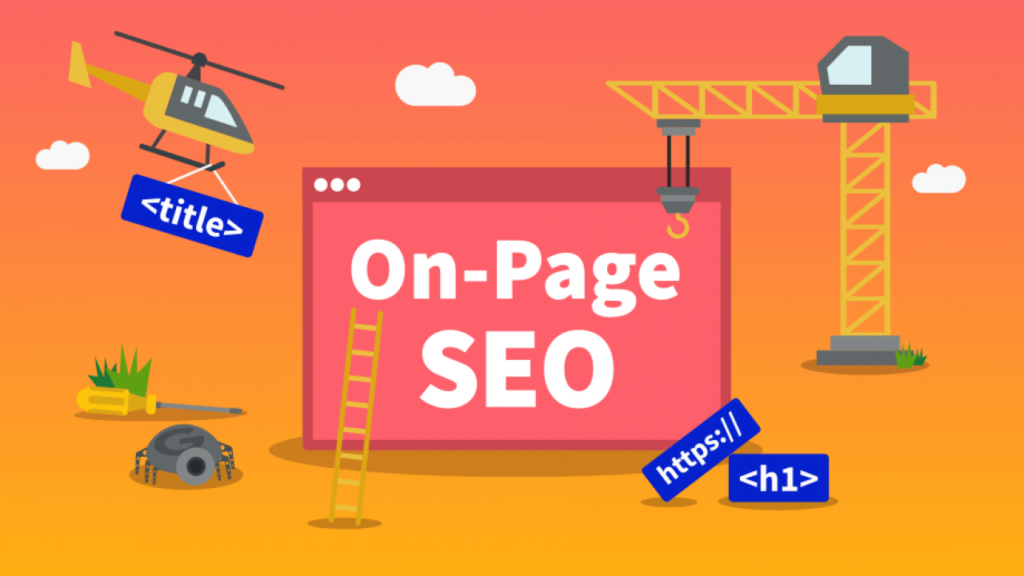Best Practices and Tips
In the dynamic landscape of digital marketing, on-page SEO optimization is a critical component for achieving higher search engine rankings. When executed effectively, on-page SEO ensures that your website is not only discoverable but also provides a positive user experience. In this comprehensive guide, we’ll delve into the best practices and tips to master on-page SEO optimization Best Practices and Tips

Understanding On-Page SEO
On-page SEO refers to the optimization of individual web pages to improve their search engine rankings and attract relevant organic traffic. It involves a combination of technical, content-related, and user experience optimizations. Here’s a breakdown of key on-page SEO elements:
1. Title Tags and Meta Descriptions
Craft compelling title tags (around 60 characters) and meta descriptions (around 160 characters) that accurately describe the content of each page. Incorporate relevant keywords naturally to enhance click-through rates.
2. URL Structure
Create clean and concise URLs that reflect the content hierarchy. Use hyphens to separate words and avoid using unnecessary parameters or symbols.
3. Header Tags (H1, H2, H3, etc.)
Organize content with header tags, making it easier for both users and search engines to understand the structure of your page. Use H1 for the main title and subsequent header tags for subheadings.
4. Keyword Optimization
Conduct thorough keyword research and strategically place keywords in your content, headings, and meta tags. However, prioritize user experience and avoid keyword stuffing.
5. Content Quality and Relevance
Create high-quality, informative, and engaging content that meets the needs of your target audience. Google rewards content that provides value and answers users’ queries.
6. Image Optimization
Optimize images by compressing them for faster loading times. Use descriptive file names and include alt text to make your content more accessible and indexable.
7. Internal and External Linking
Establish a logical internal linking structure to connect relevant pages within your website. Additionally, include authoritative external links to enhance credibility.
8. Page Loading Speed
Optimize your website’s loading speed to provide a seamless user experience. Compress images, leverage browser caching, and use a Content Delivery Network (CDN) if necessary.
9. Mobile-Friendliness
Ensure your website is mobile-friendly to accommodate the growing number of users accessing content on smartphones and tablets. Google prioritizes mobile-friendly websites in its rankings.
10. User Experience (UX) and Readability
Prioritize user experience by creating a visually appealing and easy-to-navigate website. Use legible fonts, break up content with subheadings, and maintain a clean design.

Best Practices for On-Page SEO
Now that we’ve explored the key elements of on-page SEO, let’s delve into best practices to optimize your pages effectively:
1. Conduct a Comprehensive SEO Audit
Start by conducting a thorough SEO audit to identify existing issues and opportunities for improvement. Analyze keyword rankings, assess website structure, and evaluate the overall health of your on-page elements.
2. Keep Content Fresh and Updated
Regularly update and expand your content to reflect industry trends and address evolving user needs. Fresh content signals to search engines that your website is relevant and valuable.
3. Prioritize User Intent
Understand the intent behind user searches and align your content to fulfill those needs. Google’s algorithms are increasingly focused on providing users with the most relevant and helpful results.
4. Leverage Schema Markup
Implement schema markup to provide search engines with additional context about your content. This can enhance your search engine listings with rich snippets, making them more attractive to users.
5. Optimize for Featured Snippets
Structure your content in a way that makes it eligible for featured snippets. These concise answers are often displayed at the top of search results, increasing visibility and credibility.
6. Monitor and Analyze Performance
Regularly monitor your on-page SEO performance using tools like Google Analytics and Google Search Console. Track keyword rankings, user engagement, and conversion metrics to refine your strategy.
7. Address Technical SEO Issues
Resolve technical SEO issues promptly, including crawl errors, broken links, and duplicate content. A technically sound website contributes to better search engine visibility.
8. Implement Secure HTTPS
Secure your website with HTTPS, as Google considers it a ranking factor. SSL encryption not only enhances security but also builds trust with your website visitors.
9. Create SEO-Friendly URLs
Craft descriptive and user-friendly URLs that provide a clear indication of your page’s content. Avoid lengthy URLs with unnecessary parameters.
10. Test and Optimize for Different Browsers
Ensure your website renders well across various browsers and devices. Conduct cross-browser testing to guarantee a consistent experience for all users.
Conclusion
On-page SEO optimization is a continuous and evolving process that requires attention to detail and a commitment to providing valuable content. By incorporating these best practices and tips into your strategy, you can enhance your website’s visibility, attract more organic traffic, and ultimately achieve better results in search engine rankings. Stay informed about industry trends and algorithm updates to adapt your on-page SEO tactics for continued success.


